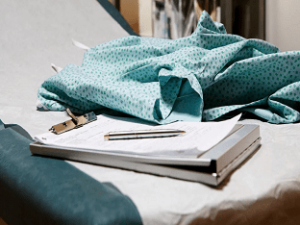 A Dilation and Curettage or D&C is a short, surgical procedure, which is typically performed if you have had a miscarriage after the first-trimester.
A Dilation and Curettage or D&C is a short, surgical procedure, which is typically performed if you have had a miscarriage after the first-trimester.
Here, dilation means to open the cervix and curettage means removing the remaining contents from the uterus. Basically, after a miscarriage, curettage is done where the uterine wall is scraped with an instrument or using a suction curettage.
Is a D&C imperative after a miscarriage?
The objective of this procedure is to prevent any hemorrhage and infection. If the miscarriage happens in early pregnancy, then the body expels the fetal tissue by itself; and this procedure isn’t required.
But if your body does not expel the tissue, then a D&C needs to be performed to stop the bleeding and avoid any infection.
How is the D&C procedure performed?
The D&C procedure could be performed in a hospital or a surgical center. Usually, a sedative needs to be given first as that would help you relax and calm down the anxiety you may be experiencing.
Mostly, a general anesthesia is used before this procedure but in some cases IV or paracervical anesthesia could also be used. Therefore, it’s not a great idea to drive to the hospital alone.
- Some antibiotics are given intravenously or orally to avoid any infection.
- The cervix is examined to check if it’s open.
- Dilators or narrow instruments are used to open the cervix if it is not open. This needs to be done to allow the surgical instruments to go through to perform the procedure. An instrument called – speculum is placed on the mouth to keep the cervix open.
- Then the tissue is removed and might be sent to a pathology for testing.
- Once the uterus becomes firm and there is no more bleeding, you will be sent back to the recovery room.
Is the D&C procedure painful?
No, it isn’t. Once the cervix is numb or the general anesthesia has had its effect, you won’t feel any pain at all. The doctor will dilate your cervix and do the procedure.
But there are some chances that you might feel some pain or cramps in the uterus when the lining is removed with a curette. However, if a local anesthesia is given, then you won’t feel anything.
What happens after this procedure?
- After the procedure, you will be kept in a post-anesthesia care unit to recover from the anesthesia.
- Mostly, it takes a couple of days to return to your normal schedule.
- Some anti-inflammatory medications could be recommended to take care of the mild pain or irritation.
- Using tampons or an intercourse is not a good idea for about two weeks after this procedure as that can lead to an infection.
- The follow-up completely depends your particular case and on your surgeon. Generally, a follow-up would be scheduled within 2 to 6 weeks after the surgery.
The risks and complications of a D&C procedure
- There are a few risks related to anesthesia; for example, you could have some reaction to the medication or have breathing problems or nausea
- There could be heavy bleeding or hemorrhage
- Infection in the uterus
- Laceration or the weakening of cervix
- Perforation or any puncture to the uterus
- Incomplete removal of the tissue or procedure could require another procedure









